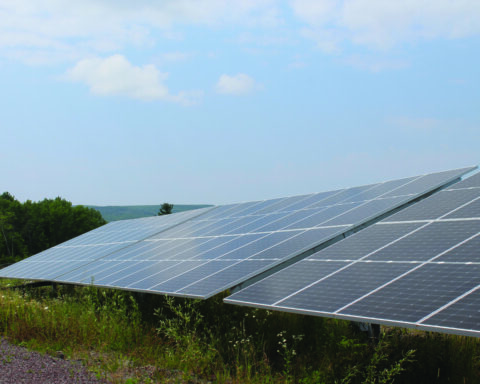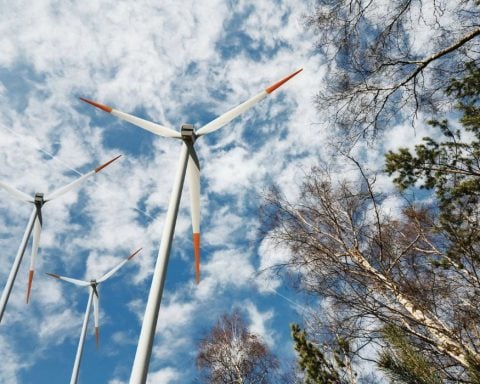Canadian oil and gas producers are at risk of “significant value erosion” if they go ahead with investments in new projects, and the damage could ripple out to investor profits, government balance sheets and the health of the broader financial system.
This stark warning was issued by the U.K.-based financial think tank Carbon Tracker in two new reports, Fading Fortunes and Petro-Provinces at Risk. The authors found that the fast pace of renewable-energy adoption worldwide and the high costs of oil sands operations put domestic producers at “heightened financial risk.”
The reports come as Ottawa and Alberta embark on a new partnership to build a pipeline from Alberta’s tar sands to the British Columbia coast. On November 27, Prime Minister Mark Carney and Alberta Premier Danielle Smith signed a memorandum of understanding (MOU) that will see the province accept a firmer industrial-carbon-pricing regime in exchange for federal support for the pipeline and some exemptions from federal greenhouse gas regulations. The MOU stipulates that the pipeline would be financed and constructed by the private sector and that Indigenous Peoples would be co-owners, though B.C. Coastal First Nations have already vowed it “will never happen.”
Carbon Tracker modelled Canadian producers’ stated upstream investments against three potential scenarios: an accelerated energy transition consistent with the Paris Agreement, a moderate transition and a slow transition. In the most aggressive transition, “business as usual” investments of both new developments and new exploration would put up to 30% of Canadian oil and gas value at risk – about triple the size of any potential upside under the slowest transition scenario.
“We can’t predict exactly what the future will look like; we have an idea of a range of possible scenarios . . . and investors should be considering that range of realistic scenarios as part of their decision-making and risk-management,” says Olivia Bisel, an analyst with Carbon Tracker and the lead author of one of the reports. “A three-to-one ratio of risk to reward should stand out to investors,” she adds.
She points out that while her analysis found that more modest investments, including some new developments and limited exploration, led to a greater likelihood for producers to benefit in the moderate and slow transition scenarios, those gains were still minor compared to the significant risk if the energy transition happens quickly.
In almost all transition scenarios, Bisel says, Canadian producers are likely to fare worse than national oil companies like Saudi Aramco or Petrobas, and integrated oil companies like ExxonMobil and Chevron, which can produce more cheaply.
Layers of risk
Adam Scott, executive director at Shift Action for Pension Wealth and Planet Health, says there’s growing consensus among economists and other experts that there could be “broader market impacts to the stability of the financial system” if the financial sector doesn’t begin to price in the likelihood of declining oil and gas valuations. Shift advocates for pension funds to rapidly transition away from oil investments; not doing so, Scott says, could hit the retirement savings of millions of Canadians.
Bisel notes that 18% of Canada’s “Big Five” banks’ financing in 2024 went to oil and gas, two-thirds of which went to domestic producers. That kind of concentration could depress the amount of lending to other sectors of the economy if the transition unfolds more quickly than expected, she says.
Jobs, gross domestic product growth and tax revenues are also at risk, Bisel says. The second Carbon Tracker report estimates that the energy transition could eliminate more than 80% of Canadian provincial governments’ expected revenue from upstream oil and gas in the 2030s.
Conflicting narratives
While oil and gas producers have allocated less of their free cash flow to new development in recent years, all Canadian producers shared guidance this year with plans to grow production (most of those guidances were specific to 2025).
The reports also come in a year when the country’s oil output has hit record highs and the trade war with the United States has made federal and provincial governments open to new pipelines and capacity-expansion projects.
“The market is saying very different things right now,” says Heather Exner-Pirot, senior fellow and director of natural resources, energy and environment at the Macdonald-Laurier Institute. The Carbon Tracker reports are expressing “a narrative [from] two years ago,” she says, but the mood is changing, and the energy transition now seems expected to be a slower one. “The market is looking to Canada for growth . . . because American shale is peaking, and there’s a demand for heavy [oil] that’s not being met.”
Scott, however, calls the report’s modelling “quite conservative” relative to others he’s seen. Despite an assumption among investors and others that the energy transition will be “incredibly slow or non-existent” if the world carries on with business as usual, “the economics of the transition have advanced so far that the transition is now self-reinforcing,” he says.
Renewable energy accounted for 90% of total power expansion globally in 2024, according to the International Renewable Energy Agency. The International Energy Agency also said in 2023 that oil and gas demand could peak by the end of the decade; BloombergNEF and oil giant BP estimated the peak even earlier, at 2029 and 2025, respectively.
Scott says that federal and provincial governments are “blindly and dangerously” looking to new energy production to steel the economy against the loss of a reliable trading partner. “A lot of the [energy transition] provides better opportunities for long-term growth and value creation at far lower risk.”
Kelsey Rolfe is a Toronto-based freelance business journalist with bylines in The Globe and Mail, Canadian Business, The Logic and the Financial Post, among others.
The Weekly Roundup
Get all our stories in one place, every Wednesday at noon EST.





